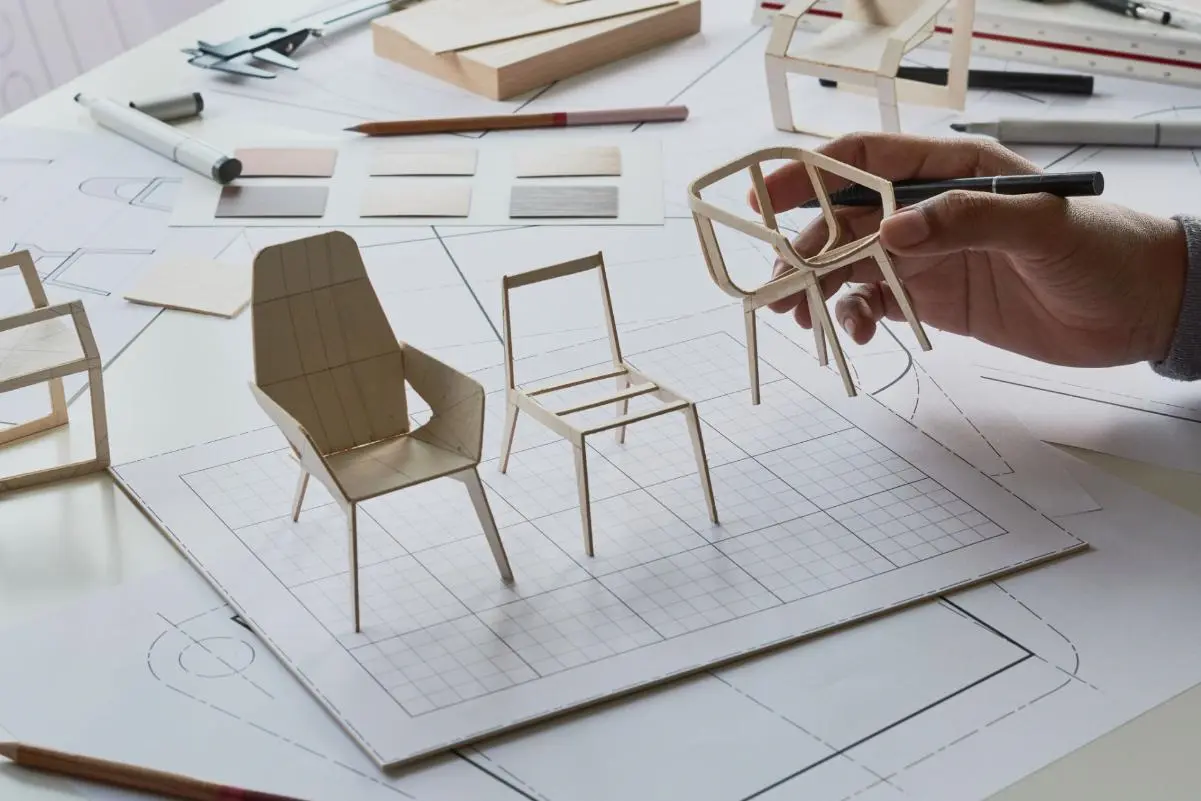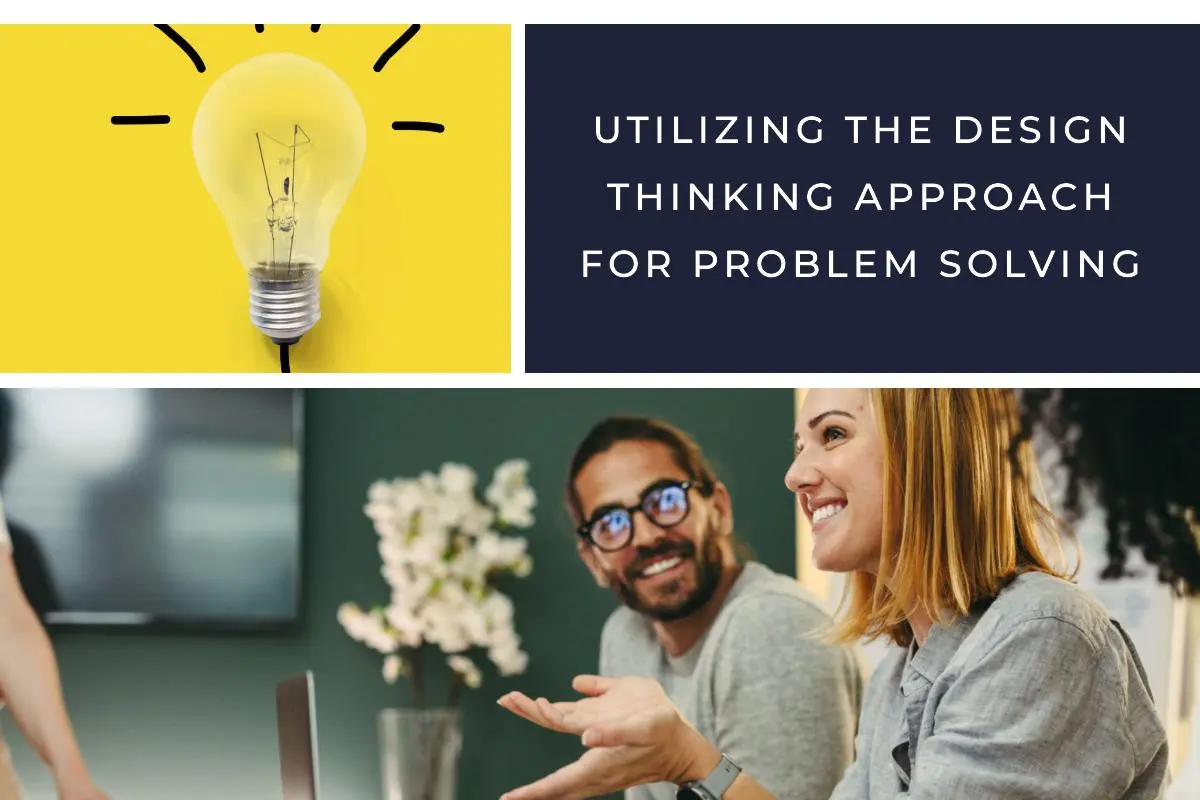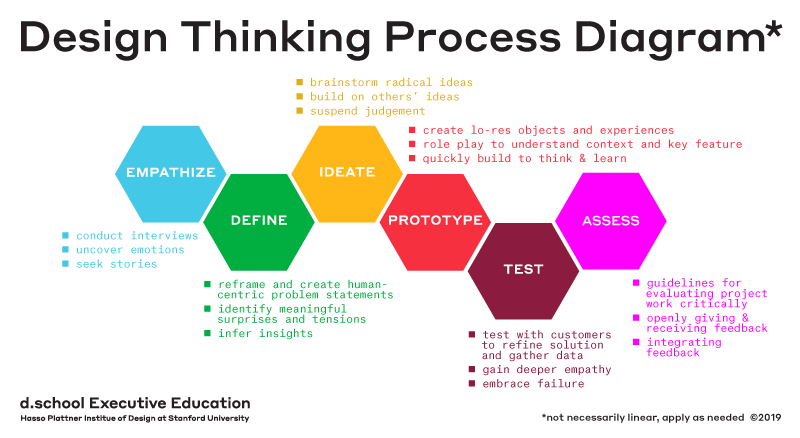In the ever-evolving landscape of innovation, design thinking emerges as a beacon of creativity and practicality.
This approach, deeply rooted in understanding human needs, offers a structured yet flexible framework for tackling complex problems. Let’s explore how design thinking can be harnessed effectively for problem-solving.
Empathize: Understand the User
The journey begins with empathy. This initial phase is all about immersing oneself in the user’s world. It’s not just about gathering data; it’s about connecting on a human level.

By engaging with users through interviews, observations, and experiences, you gain insights into their needs, desires, and challenges. For instance, if you’re designing a new educational tool, spend time in classrooms, talk to teachers, and observe students’ interactions with current tools.
Define: Articulate the Problem
Armed with empathy-driven insights, the next step is to define the problem clearly. This phase involves synthesizing information to pinpoint the core issue.

A well-defined problem statement serves as a guiding star for the entire process. Instead of saying, “We need a better learning app,” a more precise definition would be, “How might we create an interactive learning experience that engages middle school students in science?”
Ideate: Generate Ideas
Now, the floodgates of creativity open. Ideation is about brainstorming a wide array of ideas without immediate judgment or constraint.
Encourage wild ideas and diverse perspectives.

This stage thrives on quantity over quality, as even the most outlandish concepts can spark innovative solutions. For example, you might explore ideas ranging from gamified learning modules to virtual science labs.
Prototype: Create Tangible Solutions
Ideas take shape in the prototyping phase. Here, you build simple, cost-effective models of your concepts. These prototypes are not final products but tools for exploration and learning. They allow you to test different aspects of your ideas quickly.
For instance, create a basic version of your learning tool and let a small group of students and teachers interact with it.
Test: Refine and Improve
Testing prototypes with real users provides invaluable feedback. This phase is iterative, often looping back to previous stages. Based on user interactions, gather insights on what works, what doesn’t, and why.

This feedback is crucial for refining the solution. If students find certain features confusing or unengaging, iterate on the design until it better meets their needs.
Implement: Deliver the Final Solution
Once the design has been refined through multiple iterations, it’s time to implement the solution on a broader scale. This involves not just launching the product but also considering how to support its adoption and use.
Continuous monitoring and willingness to iterate further ensure that the solution remains effective and relevant.
Real-Life Example: Improving Patient Experience in a Hospital
Scenario:
Emma, a hospital administrator, notices that patient satisfaction scores are lower than expected. She decides to use the design thinking approach to address this issue and improve the overall patient experience.
Step 1: Empathize
Emma begins by gathering a diverse team including nurses, doctors, patients, and family members. Together, they conduct interviews and observations.
They spend time in waiting rooms, shadow medical staff, and speak directly with patients and their families.
Emma and her team learn that long wait times, unclear communication about treatment processes, and a lack of comfortable facilities are major pain points.
Step 2: Define
With a wealth of insights gathered, Emma’s team synthesizes the information to define the problem clearly.
They articulate the problem as: “How might we reduce patient anxiety and improve the overall experience during hospital visits?“
Step 3: Ideate
The team moves into the ideation phase, hosting several brainstorming sessions. They encourage all ideas, no matter how unconventional.
Suggestions range from digital check-in systems to creating more comfortable waiting areas with entertainment options.
They also consider ways to improve communication, such as using apps to provide real-time updates about wait times and treatment progress.
Step 4: Prototype
Emma’s team selects a few promising ideas to prototype.
They develop a basic version of a digital check-in system, redesign one waiting area with comfortable seating and entertainment options, and create an app to provide updates to patients and families.
These prototypes are simple and cost-effective, allowing for quick testing and iteration.
Step 5: Test
The prototypes are tested in a specific department of the hospital. Patients use the digital check-in system, wait in the newly designed area, and receive updates via the app.
The team collects feedback through surveys and direct interactions.
Patients report feeling less anxious and more informed about their treatment. However, they also suggest improvements, such as adding more detailed updates in the app and providing personal touch points, like staff checking in periodically.
Step 6: Implement
Based on the feedback, Emma’s team refines the prototypes. They enhance the app with more detailed updates and train staff to interact more with waiting patients.
Once the refined solutions are tested again and show positive results, Emma implements them across the entire hospital.
Continuous monitoring and feedback loops are established to ensure the solutions adapt to future needs.
Conclusion
By following the design thinking process, Emma and her team transform the patient experience.
They start with empathy, deeply understanding the patients’ needs, then clearly define the problem. Through brainstorming and prototyping, they develop innovative solutions and refine them based on real-world testing.
This iterative process not only solves the initial problem but also creates a more patient-centered hospital environment, significantly improving satisfaction scores.


